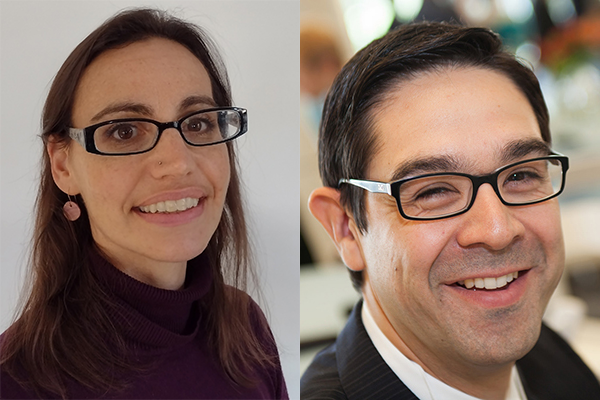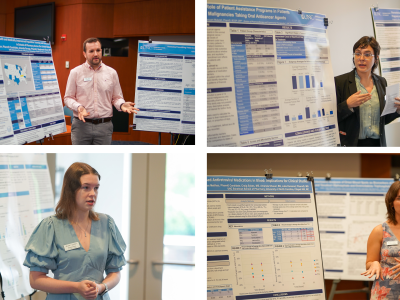February 9, 2022

With the help of a $2.2 million RO1 grant from the National Institutes of Health’s National Cancer Institute, Shawn Hingtgen, Ph.D., will work to pursue therapies that suppress glioblastoma tumor recurrences after surgery.
Glioblastoma is one of the most treatment-resistant, complex and deadly cancers, according to the National Brain Tumor Society. The disease accounts for 48 percent of all primary malignant brain tumors, with more than 13,000 people in the United States diagnosed each year. Each year, 10,000 Americans die from the disease.
Over the next five years, Hingtgen will work with Co-PI Jillian Perry, Ph.D., assistant professor in UNC’s Center for Nanotechnology in Drug Delivery, on their project titled, “Harnessing Continuous Liquid Interface 3D Printing to Improve Tumor-homing Stem Cell Therapy for Post-surgical Brain Cancer.”
The team will work to build a therapy that can be implanted into the brain at the time of a patient’s tumor resection surgery. To do so, they will leverage the power of Continuous Liquid Interface Printing (CLIP). Invented by Dr. Joseph Desimone, co-investigator on the team, CLIP is a photochemical process that utilizes light and oxygen to rapidly produce polymer objects from a pool of liquid resin.
The team will utilize the CLIP technology and 3D printers from CarbonTM to build several unique 3D matrices and assess the impact of different internal and external scaffold features on tumor-homing tumoricidal neural stem cell (tNSC) therapy for post-operative glioblastoma.
Working closely with their clinical partners on the proposal, Dr. Matthew Ewend M.D. and Dr. Simon Khagi M.D., testing results of their builds will allow the team to take a critical step toward creating matrix/tNS therapies that effectively suppress post-surgical glioblastoma cells.
To date, Hingtgen said they have tested a variety of 2D and 3D matrices. Their results show that 3D matrices offer numerous advantages over 2D matrices, including the ability to create a larger surface area to increase therapy cell carrying capacity.
“Completion of this study will allow us to generate a therapeutic tNSC/scaffold transplant strategy capable of robust glioblastoma killing that can be translated for human patient testing. It will also uncover the scaffold features that regulate different aspects of tNSC therapy, allowing us to modulate tNSC cancer therapy through scaffold design,” Hingtgen said.
Latest News

Dean Angela Kashuba receives Carolina Alumni Faculty Service Award

RASP poster presentations capture student research


